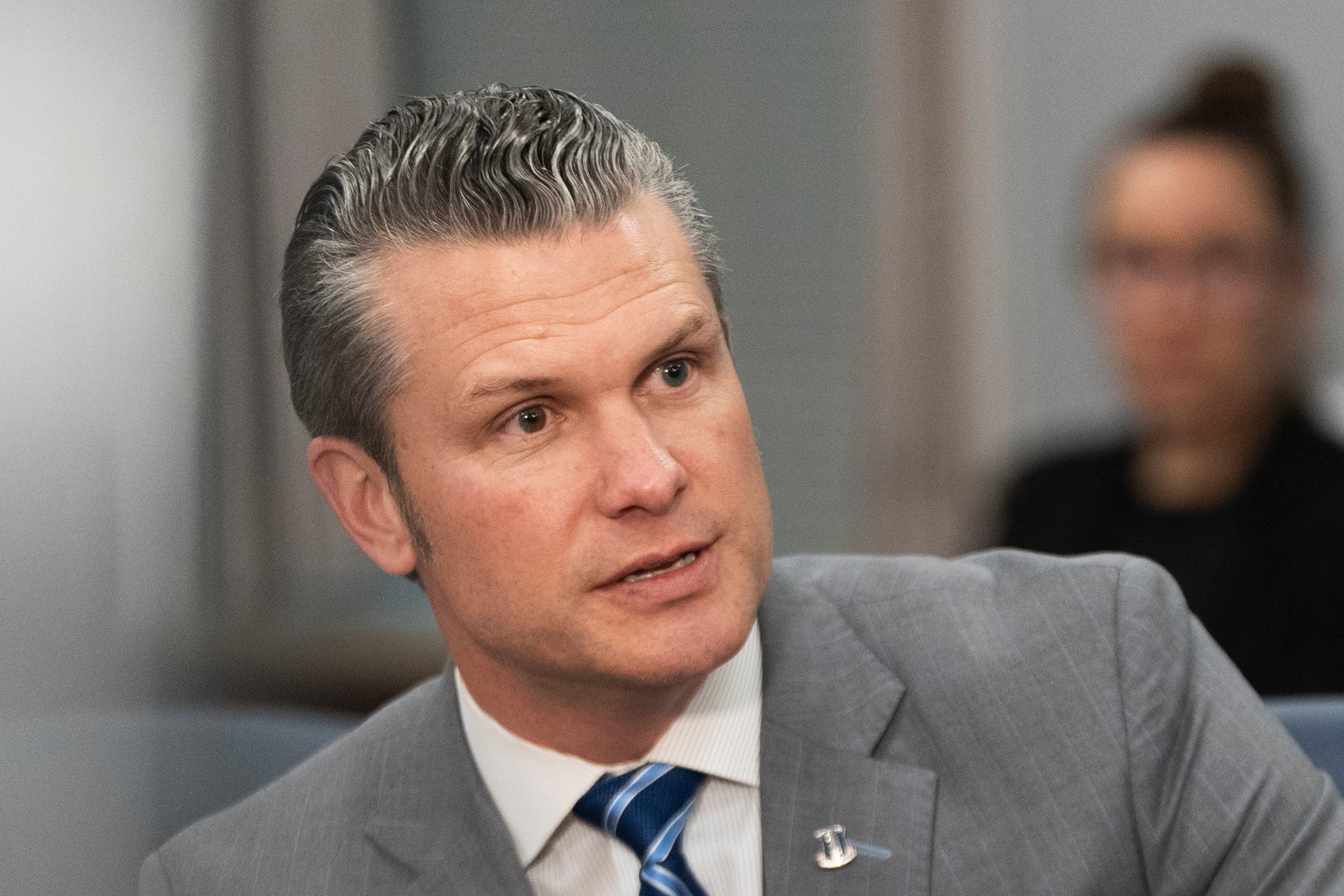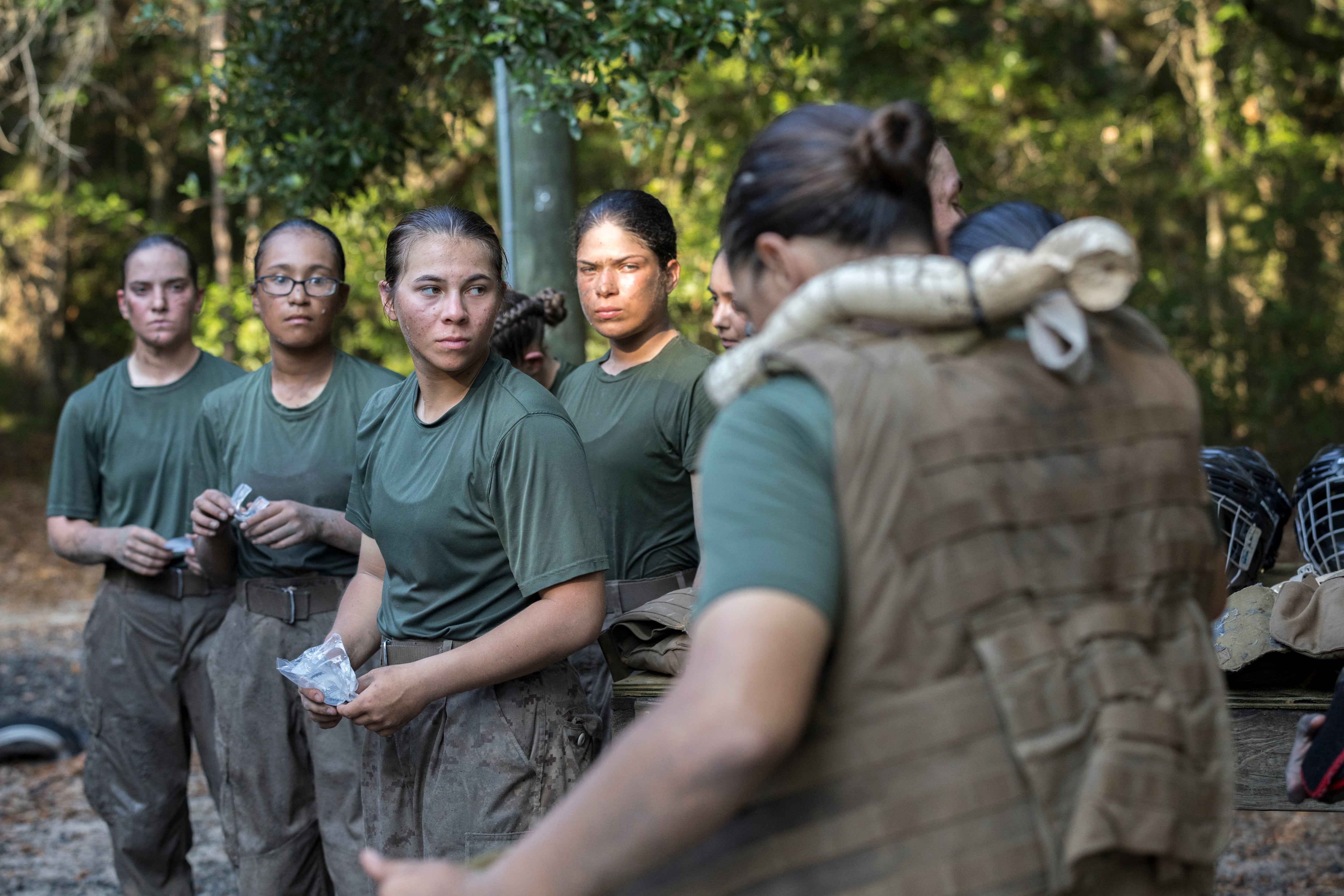Watchstanders could soon be armed with tasers and other nonlethal weapons as Fleet Forces Command looks to beef up shore and shipboard security teams in the wake of a shooting tragedy.
The Navy was working to improve its nonlethal weapon carrying rules on installation commands prior to last year's fatal shooting aboard the destroyer Mahan, said Capt. Matthew Colburn, the FFC's director of fleet antiterrorism. But force protectors gave deeper consideration to expanding the use of nonlethal weapons across the fleet after Jeffrey Tyrone Savage disarmed a watchstander and used her sidearm to shoot and kill Master at Arms 2nd Class Mark Mayo.
"Right now we don't have an overarching nonlethal policy that covers all the different options," Colburn said. "We need a cohesive and coherent policy that covers all of the various workstations."
Changes to training will coincide with new strategic guidance aimed to help sailors determine an intruder's hostile intent before the situation escalates. Most changes will be evident in the Antiterrorism Training Supervisor Course, which trains more than 200 sailors annually to oversee and assess antiterrorism and force protection training within their unit. New tactics and weapons would address everything from "a small boat approaching the ship, someone coming down the pier, or a crowd on the pier," said Capt. Raymond Benedict, commander of the Center for Security Forces, which provides 31 formal courses in antiterrorism force protection and security force training.
No other changes are in the works. In fact, the Antiterrorism Training Supervisor Course and Security Reaction Force-Basic and Advanced courses were among nine CSF courses validated sufficient by FFC in late March.
External security experts and some specialists within the service have called for improvements to active-duty watchstander training and gear in the wake of the Mahan tragedy. A disturbed trucker was able to get onto base without proper ID and then onto the pier without being stopped. Savage stormed the destroyer's brow and stripped a qualified Petty Officer of the Watch of her 9mm service pistol. Investigators did not fault the POOW for drawing her weapon, but failing to point it at the approaching assailant.
One security expert said this tragedy should be a wake-up call for the Navy to professionalize its security guards, such as relying solely on masters-at-arms or civilian security officers to stand armed sentry watches.
"Sailors have to do their job well, but also be a firefighter at sea and a security guard in port," said Fred Burton, an executive and security expert at the advisory firm Stratfor. "You either have to have better training or professionalize security. Nobody wants to hear that because of headcount, budget, and the usual woes. But you very well could be asking too much of an individual that's already got a full-time job and isn't trained as well to deal with these kinds of hostile situations."
Others, however, said security force training was adequate. "I have no doubt everyone on that watch was well trained," said a master-at-arms first class with more than 14 years of experience, who asked for anonymity because they weren't authorized to speak publicly about the Mahan shooting. "You don't skate through security training. It's tough and they take it serious. But it doesn't matter how good the training is if the person doesn't apply it."
The MA1 pointed out that the Mahan's roving patrol was one of two responders who shot and killed Savage — as trained.
Security school
The Center for Security Forces has started initial analysis to identify and incorporate changes to nonlethal training, which could come "fairly quick" if additional resources are not required, Benedict told Navy Times in an April 13 interview. If extra money or new facilities are needed, or if it lengthens the course, it will take more time. No other changes are in the works, and must be driven by agencies outside Naval Education and Training Command.
"CSF does not make any requirements, we serve the fleet," Benedict explained. "We work with and encourage dialogue with [fleet and type commanders]. They set the requirements, we just incorporate it into our curriculum. They drive the train, and we deliver the training."
When it comes to ship's security, that training starts with a three-week Security Reaction Force-Basic that course includes 11 hours of training in self-defense, control holds, and apprehension. Another four hours are spent on the baton, and seven on the use of Oleoresin Capsicum spray, both of which the POOW were carrying. The POOW had not attended the SRF-B course, but was qualified by an NEC-rated Training Supervisor Afloat in anArmed Sentry course conducted aboard the ship, as is required by rules governing the surface Navy, said Fleet Forces Command spokeswoman Lt. Cmdr. Cate Cook.
The course also gives one hour each to weapons retention, warning shots, and use of deadly force. Three days are dedicated to familiarity and proper use of the M9 service pistol, to include two hours in the simulator and 10 hours of live-fire exercises. Two days are dedicated to the M16, with live-fires comprising the second day, and instruction on the M500 shotgun covers one day, to include three hours of live fire. The two-week advance course offers a refresher on these topics, but focuses heavily on tactical team movements.
A three-week Antiterrorism Training Supervisor course trains the trainer. It is similar to the SRF-B course, but weapons training and retention are reduced to one-hour refreshers to allow deeper training on tactics and strategy.
The Afloat Training Group steps in when graduates return to the waterfront. At Norfolk, a team of 14 led by Lt. Cmdr. Brion Langley is responsible for the security and antiterrorism training of 72 ship crews during their basic phase. It starts by ensuring the required number of sailors (which changes for each ship type) have completed specialized CSF training. The ATG then conducts on-site training and qualifications with each command. The training group throws a variety of drills at each sailor, ranging from intruders and active shooters to small boat attack, and the command has to pass each test with a score of at least 80 percent to be certified.
ATG also evaluates the ship's antiterrorism training team to ensure it is able to conduct future drills. The carrier strike group ramps up security training during the integrated phase, and certification must be maintained throughout deployment.
"We train on escalation of force and use of force, every scenario is different though," Langley said. "If you look at the circumstances, to the person under the stress in what is happening, it is that individual that has to make the decision based on their training. And I believe that the training we are giving the individuals at this time is very conducive to reacting properly."
'A mindset issue'
One security expert said fixing the problem will take changes to training plans and top-level . It will take a leadership buy-in that leads to a culture of security.
"We shouldn't have to be revisiting this issue every time one of these incidents occur, but it seems like we do," said Burton, the vice president of intelligence at Stratfor, a global intelligence and advisory firm based in Austin, Texas. "Unfortunately, it often takes tragedy to cause systemic change."
Investigators made a number of recommendations to boost the buffer between sailors and a potential threat. These included the restoration of "anti-terrorism officer" billets in destroyer and amphibious squadrons, that ECPs be manned with active-duty masters-at-arms, and a physical barrier be designed and installed on Navy brows or quarterdeck entrances that "would allow the watch team more time to clearly define a threat," according to their report.
Burton commended the Mahan investigation and called it a "very thorough report that very candidly exposed the vulnerabilities and failure points." But he feels more change is needed in light of insider attacks, terrorist threats, and the fact that "society's problems don't stop at the front gate."
His solution: Provide a lot more security training or professionalize force protection with MAs or combat vets.
He also said security is "a mindset issue." While sharing the security load among more sailors has benefits, many people simply are not confrontational.
"The practical reality is you might be giving certain people a duty they are not capable of carrying out," Burton said.
Still, while a case for more training could always be made, Langley said it is not realistic — and a professional security force is "not feasible" due to limited berthing space aboard ships.
Sailors are "being tasked more and more, they get underway a lot, and they have their primary jobs as well," Langley said. "It's just a matter of balance. They are as well trained as we can get them at this point."




